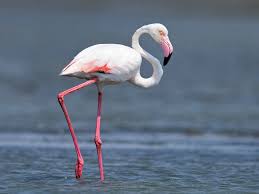Natural Vegetation and wildlife – Chapter5
Natural vegetation and wildlife is an important chapter in class IX.
Children often get confused between Natural vegetation and crops.
In this chapter we shall read about the different types of Natural vegetation and most inspiring wildlife.
We do not know who is the creator of earth.
We also do not know who has planted trees on the hills and mountains.
There must be someone who is very powerful.
Yes, it is the nature.
It is the nature which grows different types of plants and trees.
At some places these are very dense and somewhere very sparse.
Where the vegetation is dense we call it forest.
As the plants and trees in the forests are grown naturally, so it is called Natural Vegetation.
These Natural vegetation are also the home of wild animals.
NATURAL VEGETATION AND WILDLIFE:

[quiz-cat id=”1896″]
Natural vegetation simply refers to the plants and trees which has grown naturally.
Natural vegetation which has been left undisturbed by humans for a long period of time is known as virgin vegetation.
As we grow rice, wheat, fruits, and flowering plants in our garden, so we cannot call it Natural vegetation.
Our country India has all types of soils.
Varieties of landforms like plains, plateaus, and mountains.
Almost all types of climates- hot, cold, moderate.
Also, rainfall is from the heaviest in the world to dry deserts.
Therefore wide varieties of plants and trees are found here.
There are 47000 varieties of plants and trees (flora) and 89000 varieties of animals (fauna) found in India.
This makes India one of the twelve mega biodiversity countries of the world.
Factors responsible for different types of Natural vegetation in India
1 Relief or physical features
a) Land:
Different types of land (Plains, mountains, deserts, etc. will definitely give rise to different types of plants and trees.
b) Soil:
The soil varies from place to place. So different types of soils will also support different types of trees.
2. Climate:
a) Temperature: Near the equator, the temperature remains high.
As we go away from the equator, the temperature decreases.
Therefore, the vegetation changes from the equator to the poles.
b) Photoperiod (sunlight): Photoperiod means the amount of sunlight received during a day.
Sunlight varies from latitude, altitude, and the change in seasons.
Places that receive more sunlight will have more vegetation and vice-versa.
c) Precipitation: It simply means rainfall.
Places that receive more rain will have more vegetation and places which will receive less rain will have shorter and less vegetation.
Ecosystem and Biome:

Natural vegetation and wildlife
Ecosystem:
All the plants and animals in an area are interdependent and interrelated to each other in their physical environment.
This is known as the ecosystem.
A pond in your village can also be an example of an ecosystem.
Biome:
The large ecosystem is Biome.
e.g. a desert region, Polar or equatorial region, etc.
Types of Natural vegetation in India:
i) Tropical evergreen forests
ii) Tropical Deciduous forests.
iii) Tropical Thorn forests
iv) Montane forests
v) Mangrove forests
1. Tropical evergreen (rain) forests:
i. These forests are also known as Tropical rain forests.
ii. They are mainly found near the equator or between the tropics.
iii. It requires high temperature and heavy rainfall.
iv. The forests are very dense, and dark, and the trees are very tall where sunlight does not reach up to the ground.
v. Important trees found here are ebony, mahogany, rosewood, rubber, etc.
vi. as the trees do not shed their leaves altogether, they always look green, hence called evergreen forests.
vii. These forests are rich in Bio-diversity. It is the home of varieties of animals like elephants, monkeys, birds, etc.
viii. In India, they are mainly found in the Western Ghats, islands, Assam and Tamil Nadu.
2. Tropical Deciduous forests:
I. Also known as Monsoon forests.
ii. They grow in the region where the rainfall is between 70 cm to 200 cm.
iii. They are of two types: wet and dry deciduous forests.
iv. Trees of this forest shed their leaves for about six to eight weeks.
v. Trees found here are highly precious and commercially important.
vi. Important trees are Teak, Sal, Sandalwood, Khair, Bamboo, Neem, etc.
vii. common animals found are Lion, tigers, Deer, elephants, varieties of birds, lizards, snakes, etc.
3. Tropical thorn forests:
i. Found mostly in the western parts of our country.
ii. the gap between the trees increases and the height decreases because of less rainfall.
iii. In India, mainly found in Chhattisgarh, Madhya Pradesh, U.P, Rajasthan, and Gujarat.
iv. The trees are scattered and have very long and deep roots.
v. Leaves are waxy and thick to minimize water loss.
vi. Important trees are cactus, babool, Kikar, Acacias, date palm, etc.
vii. Common animals are camel, horse, fox, wolf, rat, rabbit, peacock, etc.
4. Montane forests:
i. On the Himalayas, from bottom to top, almost all type of vegetation is found.
ii) As we go high, the temperature decreases, and the type of vegetation changes.
iii) between 1000 to 2000m wet temperate type of forests.
iv. 1500 to 3000m, Conical shape trees like pine, deodar silver fur, spruce, etc. are found.
v. above 3000m temperate grasslands.
vi. 3600m to 4500m, Alpine vegetation like silver fur, junipers, pines, etc. are found.
vii. Above 4500m, as the Himalayas are covered with snow, therefore lichens, and mosses are found which is called Tundra vegetation.
5. Mangrove/Tidal forests:
i. A place where fresh water meets with salty seawater.
ii. The type of vegetation found here is called Mangrove or Tidal forest.
iii. Here, as the area is marshy (Daldal), the roots of the trees are in the water.
iv. In India, it is mainly found in the deltas of Ganga-Brahmaputra, Mahanadi, Krishna, Kaveri, and Godavari.
v. Sundari tree is found in abundance, therefore Ganga-Brahmaputra delta region is also known as Sunderbans.
vi. Royal Bengal Tiger, crocodiles, Gharials, etc are common animals found in this region.
Medicinal plants found in India:
- Sarpgandha: It controls Blood pressure.
- Jamun: Juice is useful in making vinegar. Also controls diabetes.
- Arjun: Regulates blood pressure and cures earache.
- Babool: Treatment of eye sores.
- Neem: As it has high antibiotic and antibacterial properties, therefore used in making many types of medicines.
- Tulsi: Has high medicinal value, therefore used to cure cough and cold.
Importance of Natural vegetation and wildlife in India

VAT SAVITRI, Natural vegetation and wildlife.
In India, we worship plants and trees.
We have also associated our Gods and Goddesses with one animal.
Lord Krishna with cow, Shiva with a snake, Ganeshji with a mouse, Durgaji with a lion, Lakshmiiji with an Owl, Yamraj with a buffalo, etc.
Do you know why?
So that we do not harm these trees and animals and the ecological balance is maintained.
Every species has a role to play in the ecosystem.
Like plants and trees, India also has a wide variety of animals.
There are more than 89000 varieties of animals including insects, fishes, reptiles, mammals, etc. found in India.
Therefore, we can say that India has 12% of the world’s stock.
It is, therefore, our moral responsibility to plant and protect our natural vegetation and wildlife.
Hunting and killing of animals for earning money, Pollution, chemical wastes, fertilizers, and reckless cutting of the forests are responsible for the imbalance.
This has made many species endangered and many have become extinct.
Do you know that the fastest running animal Cheetah is no more left in Asia?
Steps were taken by the Government to conserve wildlife:

Leopard
- Wildlife Protection Act was implemented in 1972.
- To protect habitat by protecting forests.
- Hunting and poaching (smuggling) of animals is banned.
- Opening of National Parks, Sanctuaries, Zoos and Bio-reserves
- Surveys are done to collect information about rare animals.
- Some of the projects have been initiated like Project Tiger, Project Elephant, etc.
- “Van-Mahotsav” is celebrated for a week in the first week of July.
Difference between National parks, Sanctuary, and Bio-reserves?
National park:
I) Rules are very strict.
ii) Hunting and grazing of animals are not allowed.
iii) Falls in category ii of a protected area.
iv) Flora, Fauna, Landscape, and Historical objects are protected.
v) Tourists are allowed.
2. Sanctuary:
I) Rules are not very strict.
ii) Grazing of animals is allowed.
iii) Falls in category iv type of protected area.
iv) Animals are protected in their natural habitat.
v) Preserves animals, insects, birds, etc.
vi) Tourists are allowed.
3. Bio-reserves:
I) It has moderate restrictions.
ii) Mainly a program by UNESCO.
III) Bio-diversity is protected with research facilities.
iv v) Tourists are generally not allowed.
Natural Vegetation and wildlife – Chapter5
Selected short questions (1 mark)
Q1. Define ecosystem.
Ans) All the plants and animals in an area are interdependent and interrelated to each other in their physical environment.
This is known as the ecosystem.
Q2. What is meant by Biome?
Ans) Biome means plant communities occurring in distinct groups in areas having the same climatic conditions.
There are five main biomes namely Forests, Savana, Grasslands, Desert, and Tundra.
Q3. What factors are responsible for the distribution of plants and animals in India?
Ans) Climate determines the distribution of plants and animals in India.
However, other factors are soil, relief, rainfall, sunlight, etc.
Q4. Why are Evergreen forests found on the western slopes of the Western Ghats?
Ans) The western slopes of the Western Ghats get heavy rainfall as they lie on the windward side where the monsoon winds are very active.
It receives enough rain and sunlight.
Q5. Why do Tropical Deciduous forests shed their leaves during summer?
Ans) Places with long dry seasons have Deciduous forests.
Therefore, to reduce the loss of water the trees shed their leaves for about 6-8 weeks during March and April.
Q6. Why is the Thorny type of vegetation found in Rajasthan?
Ans) Found in areas having rainfall less than 75 cm.
As Rajasthan receives less rainfall and the soil is dry therefore Thorny type of vegetation exists.
Q7. Name the National animal and National bird of India.
Ans) National animal – Tiger and National Bird is Peacock.
Application-based questions:
Q8. Why Tropical evergreen forests are difficult to exploit for commercial purposes? Give two reasons.
Ans) Tropical evergreen forests are difficult to exploit for commercial purposes because:
i) The forests are very dark, dense and branches tangled with each other.
ii) Lack of means of transport deep into the forests has made trees difficult to cut for commercial purposes.
Q9. “Land and soil affect the natural vegetation directly and indirectly.” Justify by giving two examples.
Ans) Land and soil affect the natural vegetation directly and indirectly. Two examples are:
a) The Sandy soil of the desert support cactus and thorny bushes.
b) Wet, marshy and deltaic soil supports mangroves.
Q10. How are the habitats of camels and those of one Horned rhinoceros diametrically opposite to each other?
Ans) Camels are found in Rajasthan (hot and dry regions) whereas the one-homed rhinoceros are found in Assam and North-West Bengal
(Cold and wet regions).
Q11. Why are the leaves of the Thorny forests small, roots deep, and stems succulent?
Ans) Leaves of the Thorny Forests are mostly small to minimize evaporation. Roots are deep in the search for groundwater and the stems are
succulent to conserve water.
Picture based question
Q12. Study the given picture, and identify the type of vegetation.
Mention one feature of that vegetation.

Identify the type of vegetation?
Ans) Mangrove forests or Tidal vegetation. Roots are in the water.
This type of forest grows in regions of freshwater & saline water.
Q13. Define the factors in brief that have affected the forest cover of India?
Ans) Factors that have affected the forest cover of India are:
i) the increasing demand for agricultural land.
ii) Development of mining and industries.
Q14. What is the difference between endemic and exotic plants?
Ans) The type of vegetation that is purely Indian are endemic.
Similarly, plants and trees which have come from outside are exotic plants.
Natural Vegetation and wildlife – Chapter5
Short answer type questions (3marks)
Q1. India has a huge diversity of flora and fauna. Give three reasons.
Ans) India has a huge diversity of flora and fauna due to the following factors:
i) LAND: We know that the nature of land influences the vegetation type.
As in India, we have all types of land (mountains, plateaus, plains, deserts, etc.) which gives rise to a variety of vegetation.
ii) SOIL: India also has wide varieties of soil (Alluvial, Black, Red, Laterite, Sandy, etc.)
Different soils provide the basis for different types of vegetation.
iii) TEMPERATURE AND RAINFALL: Temperature and rainfall are two important factors for the growth of natural vegetation.
Due to wide variation in temperature and rainfall, the vegetation differs.
Q2. Why has India’s natural vegetation undergone many changes in the recent past? Explain.
Ans) India’s natural vegetation has undergone many changes in the recent past due to several reasons:
i) for the expansion of agriculture and transportation.
ii) To obtain minerals from underground.
iii) for the expansion of towns and cities.
Q3. Give a brief description of the Mangrove forests.
Ans) i) The Mangrove vegetation grows in the area where the freshwater of the river meets with saline water of the sea.
ii) The roots of the plants are mainly in water.
iii) The deltas of Ganga-Brahmaputra, Mahanadi, Godavari has such vegetation.
Q4. Describe the vegetation found at higher altitudes?
Ans) i) Higher altitude generally has a wide range of vegetation.
i) The wet temperate type of forests are between a height of 1000 and 2000m.
ii) At high altitudes, generally, more than 3,600m above sea level, temperate forests and grasslands give way to the Alpine vegetation.
iii) At higher altitudes, after the snowline, mosses and lichens form part of tundra vegetation.
Q5. Distinguish between Dry Deciduous and Wet Deciduous forests?
Ans) Dry Deciduous Forest:
i) Found in areas having rainfall between 100 to 70 cm.
ii) The forest is open and not very dense.
iii) Important trees found here are Sal, Teak, Neem, Peepal, etc.
iv) Mainly found in Central and western Indian states like Chhattisgarh, M.P, Gujarat, Rajasthan, Haryana, etc.
Wet or Moist Deciduous Forest:
i) Found in areas having rainfall between 200 to 100 cm.
ii) Denser as compared to dry deciduous forests.
iii) Important trees found here are Sal, Shisham, Khair, Mulberry, Teak, etc.
iv) Mainly found in Eastern and southeastern Indian states like W.B., Orissa, Jharkhand, Karnataka, Andhra Pradesh, Maharashtra, etc.
Q6. Differentiate between Tropical rain forests and Tropical Deciduous forests?
Ans) TROPICAL RAIN FORESTS:
i. Other name of Tropical rain forest is Tropical evergreen forest.
ii. These forests lie on the equator or between the tropics.
iii. It requires high temperature and heavy rainfall.
iv. The forests are very dense, and dark, and the trees are very tall where sunlight does not reach up to the ground.
v. Important trees found here are ebony, mahogany, rosewood, rubber, etc.
vi. as the trees do not shed their leaves altogether, they always look green, hence called evergreen forests.
vii. These forests are rich in Bio-diversity as it is the home to varieties of animals like elephants, monkey, rhinoceros, birds, scorpions etc.
viii. In India, this type of forest is in the Western Ghats, Andaman and Lakshadweep islands, Assam and Tamil Nadu.
TROPICAL DECIDUOUS FORESTS:
I. Also known as Monsoon forests.
ii. They grow in the region where the rainfall is between 70 cm to 200 cm.
iii. Two types include wet and dry deciduous forests.
iv. Trees of this forest shed their leaves for about six to eight weeks.
v. Trees found here are highly precious and commercially important.
vi. Important trees are Teak, Sal, Shisham, Sandalwood (Chandan), Khair (kattha used in the pan), Bamboo, Neem, Peepal, etc.
vii. common animals found are Lion, tigers, Deer, elephants, varieties of birds, lizards, snakes, etc.
Natural Vegetation and wildlife – Chapter5
Long answer type questions (5 marks)
Q1. Describe any five features of the mountainous forests of India?
Ans) Five features of mountainous forests of India:
i) In mountainous areas, increasing altitude leads to a corresponding change in Natural vegetation.
ii) In the foothills of a mountain, one can see evergreen broad leaf trees such as oaks and chestnuts.
iii) As we go further high, (1500 to 3000m), you will find conical shape trees like pine, Deodar, Silver fur, spruce etc.
iv) At further higher elevations (3600 to 4500m), Grasslands are common.
v) After crossing 4500m, the mountains have snow cover.
Therefore, during the summer season, Lichens and mosses grow where the snow melts.
vegetation.
Q2. How do forests play an important role in preserving the ecosystem? Mention any five points.
Ans) Forests play an important role in preserving the ecosystem. As forests come under renewable resources, they play a major role in enhancing the quality of the environment.
i) Forests modify the local climate.
ii) They control soil erosion and also add humus to the soil.
iii) Forests also bring rain and recharge the underground water.
iv) It supports a variety of industries.
v) Provides livelihood to many communities and gives protection to wild animals (Bio-diversity).
CONCLUSION: Natural Vegetation and wildlife – Chapter5
Since the creation of this earth, Natural Vegetation and Wildlife GEOGRAPHY LESSON PLAN – IX – TERM II has been the part of this beautiful world.
They provide oxygen, wood, grain, fruits, flowers, leaves, etc.
After giving life-supporting resources to humans, humans cut down these trees and kill the innocent wild animals which together maintain the ecological balance.
Is the natural vegetation natural in a real sense.
किसी शायर ने क्या खूब कहा है,
१. इतनी ना कर देख-रेख कि बगीचे आश्रित हो जाएँ।
हमने जंगल के पौधों को खुद ब खुद पनपते देखा है।
२. हवा भी बाज़ारों में बिकने लगा है,
इतना अधिक पेड़ जो कटने लगा है।




0 Comments